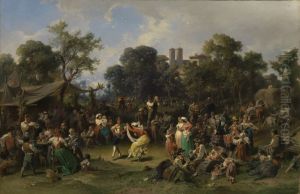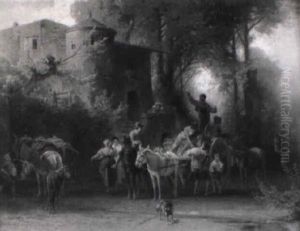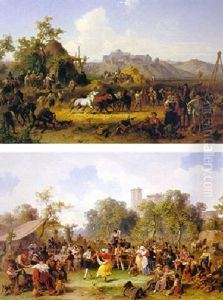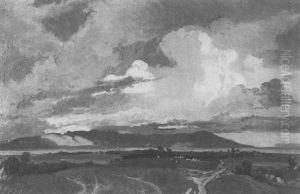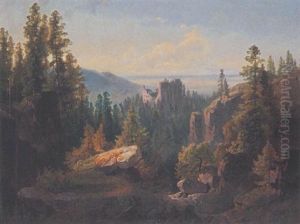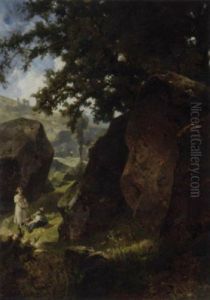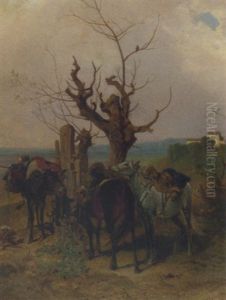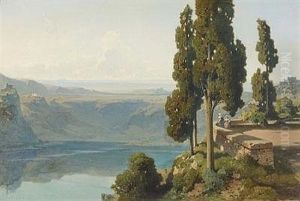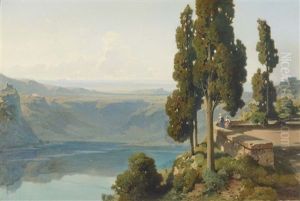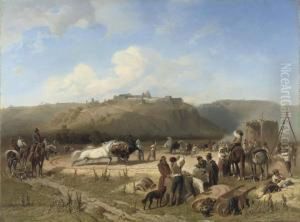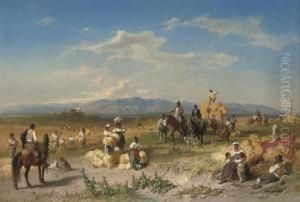Ernst Schweinfurth Paintings
Ernst Schweinfurth was a notable German architect, archaeologist, and Egyptologist. Born on June 5, 1856, in Breslau, which was then part of Prussia (now Wrocław, Poland), Schweinfurth was educated in the traditions of historicism, which was prevalent in the architecture of the 19th century. His early career was marked by his work on architectural projects, but his interests soon expanded to include the history and archaeology of the Mediterranean region, particularly Egypt.
In 1880, Schweinfurth set out on an extensive journey that would profoundly shape his career. He traveled to Egypt, where he was captivated by the ancient culture and its remnants. His travels extended to the Near East, including Palestine and Syria, and throughout Egypt, where he studied ancient Egyptian architecture and art. These experiences deepened his understanding of ancient civilizations and laid the groundwork for his future contributions to Egyptology.
Schweinfurth's most significant contribution to the field was his exploration and documentation of ancient Egyptian sites. He was particularly interested in the architectural history of Egypt, and his meticulous drawings and analyses of Egyptian structures contributed valuable knowledge to the field. His work went beyond mere documentation; he also engaged in the restoration and preservation of ancient monuments, which was a pioneering effort at the time.
Throughout his career, Schweinfurth maintained a scholarly approach, publishing his findings in various academic journals and books. His publications covered a wide range of topics, from detailed studies of Egyptian temples and tombs to broader discussions of architectural styles and cultural history. He was an active member of the German archaeological community and collaborated with many other prominent scholars of his time.
Ernst Schweinfurth's career spanned over six decades, and his contributions to the fields of architecture, archaeology, and Egyptology were widely recognized by his contemporaries. He passed away on October 19, 1945, in Berlin, leaving behind a legacy of scholarly work that continues to be referenced by researchers and enthusiasts of ancient Egypt. His interdisciplinary approach to understanding the past through its material culture remains influential in the study of ancient civilizations.

